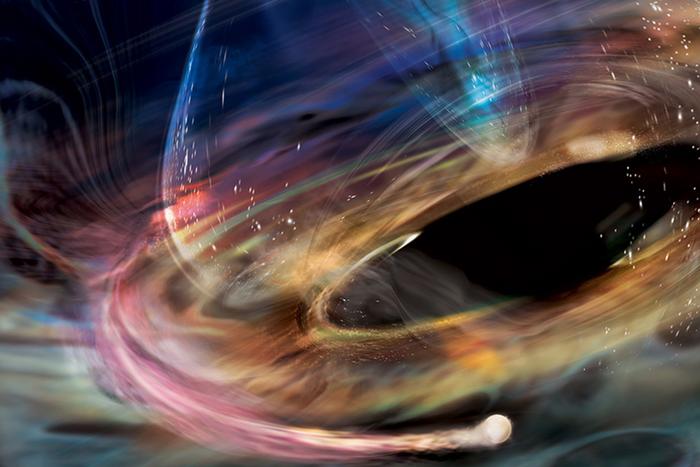Mysterious black hole starts flashing – and scientists don’t know why

Your support helps us to tell the story
From reproductive rights to climate change to Big Tech, The Independent is on the ground when the story is developing. Whether it's investigating the financials of Elon Musk's pro-Trump PAC or producing our latest documentary, 'The A Word', which shines a light on the American women fighting for reproductive rights, we know how important it is to parse out the facts from the messaging.
At such a critical moment in US history, we need reporters on the ground. Your donation allows us to keep sending journalists to speak to both sides of the story.
The Independent is trusted by Americans across the entire political spectrum. And unlike many other quality news outlets, we choose not to lock Americans out of our reporting and analysis with paywalls. We believe quality journalism should be available to everyone, paid for by those who can afford it.
Your support makes all the difference.A mysterious black hole has started behaving even more strangely, scientists have said.
The supermassive black hole has been sending out flashes that have increased in speed. Astronomers say they have never seen anything like it before.
The black hole is known as 1ES 1927+654, has the mass of a million of suns and is in a galaxy roughly 100 million miles away.
It was already fascinating to scientists. In 2018, they watched as the swirling hot plasma that makes up its corona suddenly disappeared, before coming back a few months later – which itself was unprecedented.
Scientists had been watching it since “because it was so beautiful”, co-author Erin Kara, associate professor of physics at MIT. “Then we noticed something that has never really been seen before.”
Researchers say that for the last two years X-ray flashes have been coming out of the supermassive black hole with an increasing frequency, going from once every 18 minutes to every seven minutes. That, too, has never been seen before.
“We’ve never seen this dramatic variability in the rate at which it’s flashing,” said Megan Masterson, a graduate student in physics at MIT who helped lead the discovery. “This looked absolutely nothing like a normal black hole.”
Astronomers are not sure why that might be happening. The most likely explanation is that there is a spinning white dwarf slowly moving towards the edge of the black hole – but that would mean that it is hovering on the edge of it, getting close without falling in.
“This would be the closest thing that we know of around any black hole,” Ms Masterson said . “This tells us that objects like white dwarfs may be able to live very close to an event horizon for a relatively extended period of time.”
If that is the case, the white dwarf would be sending out gravitational waves. That means that the theory could be checked by watching for them with future observatories.
The findings are reported in a new article, ‘Milli-Hertz Oscillations Near the Innermost Orbit of an Extreme Supermassive Black Hole’, published in the journal Nature.
Join our commenting forum
Join thought-provoking conversations, follow other Independent readers and see their replies
Comments